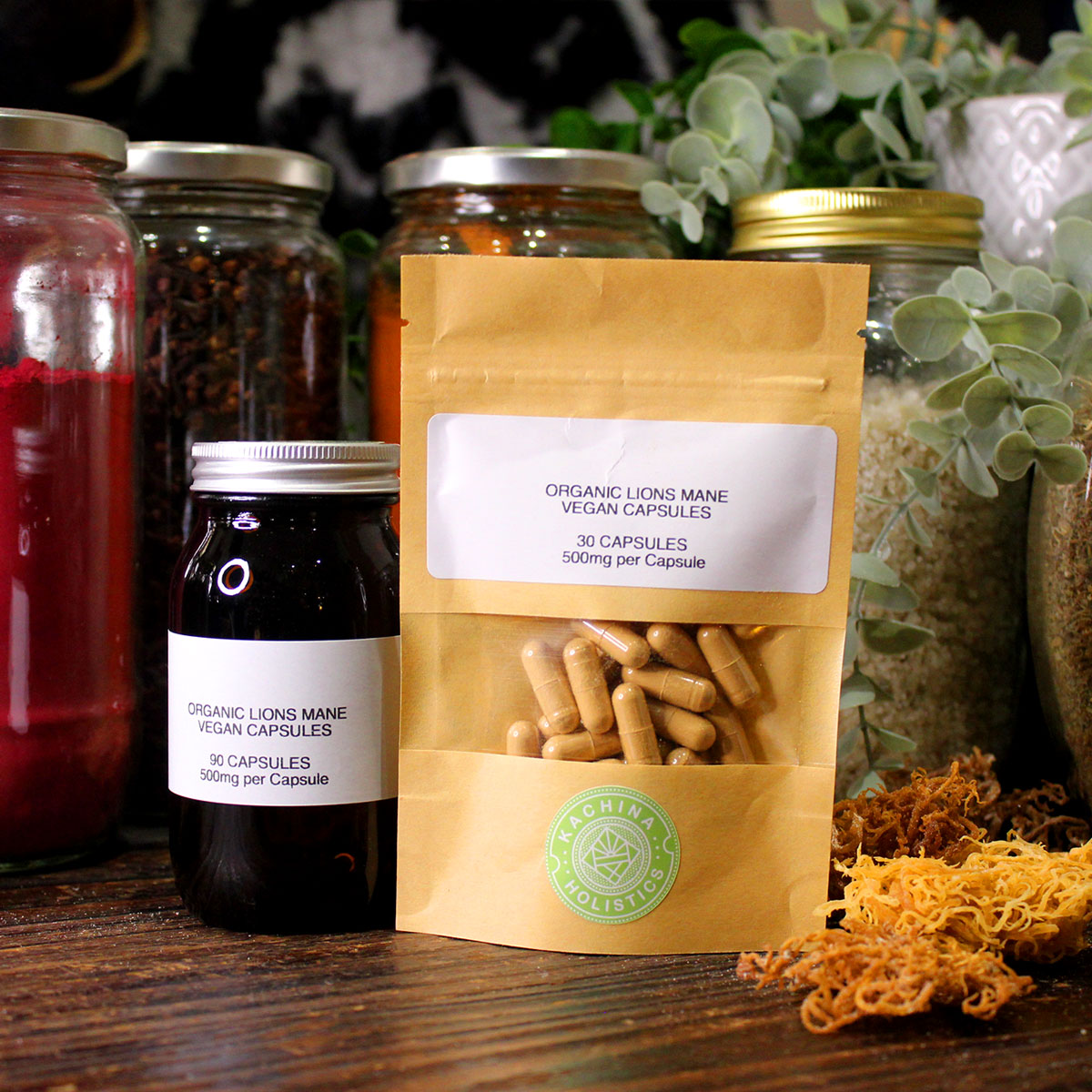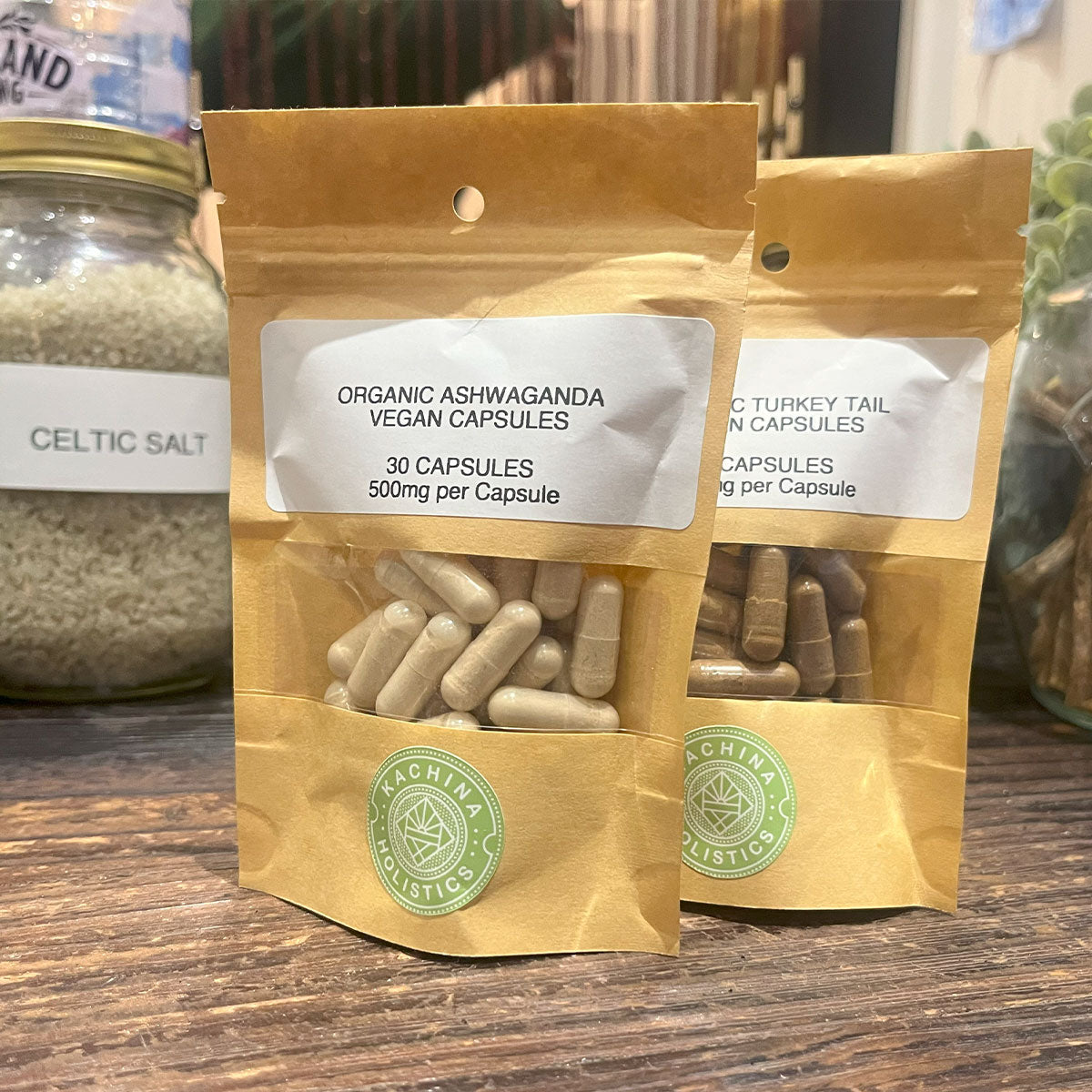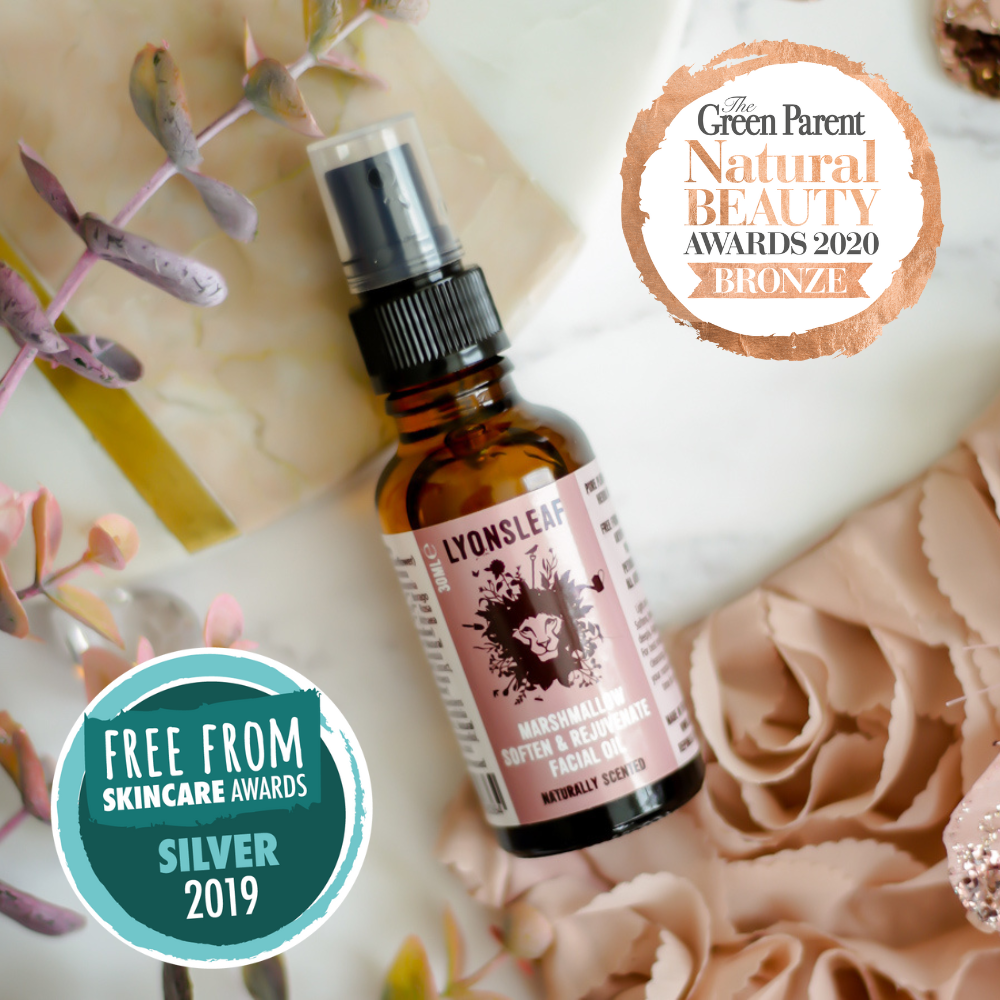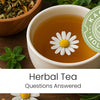Mullein (Verbascum Thapsus) - What is it? How to Use & Benefits

Welcome to our exploration of the fascinating world of Mullein, a plant that has captivated the interest of botanists, gardeners, and nature enthusiasts alike. Known scientifically as Verbascum thapsus, also known as common mullein, Mullein is a unique species that stands out in the plant kingdom with its tall, pole-like stems and beautiful yellow flowers.
Native to Europe, northern Africa, and Asia, Mullein has made its way across the globe, finding a home in various habitats. Its resilience and adaptability have allowed it to thrive in different environments, from well-lit, disturbed soils to neglected meadows and pasture lands.
In this blog, we will delve into the details of this remarkable plant, exploring its origins, its distinctive physical characteristics, and the habitats where it is commonly found. Join us as we uncover the secrets of Mullein, a plant that is as intriguing as it is beautiful.
What is Mullein?
Mullein, also known as Verbascum thapsus, is a species of flowering plant in the figwort family Scrophulariaceae. It is commonly referred to as the great mullein or common mullein.
Scientific Name and Origin
The scientific name for Mullein is Verbascum Thapsus. This plant is native to Europe, northern Africa, and Asia. However, it has been introduced to other regions including the Americas and Australia.
Description of the Plant
Mullein is a hairy biennial plant that can grow to 2 metres tall or more. In its first year, it produces a rosette of large Mullein leaves, up to 50 cm long. The second-year plants normally produce a single unbranched stem, usually 1–2 m tall. The tall, pole-like stems end in a dense spike of small, yellow flowers. All parts of the plants are covered with star-shaped trichomes. This cover is particularly thick on the Mullein leaves, giving them a silvery appearance.

Where It’s Commonly Found
The Mullein plant grows in a wide variety of habitats, but it prefers well-lit, disturbed soils. It can appear soon after the ground receives light, from long-lived seeds that persist in the soil seed bank. It is a common weedy plant that spreads by prolifically producing seeds, and has become invasive in temperate world regions. It is often found growing on disturbed soils where the long-lived seeds have been able to germinate. It is typically found in neglected meadows and pasture lands, along fence rows and roadsides, in vacant lots, wood edges, forest openings and industrial areas.
Historical Uses of Mullein
Mullein, or Verbascum thapsus, has a rich history of use in traditional medicine and cultural practices, spanning across continents and cultures.
Traditional Medicine
Mullein has been used for various health purposes since ancient times. One of the earliest references to Mullein comes from Dioscorides, a Greek physician and botanist who lived in the first century AD. He recommended Mullein for lung and breathing disorders, such as asthma, bronchitis, and coughs. In Ireland, Mullein tea was made from the leaves of the plant to cure lung diseases in both humans and livestock.
Different Cultures and Their Applications
Ancient Civilizations
Dating back to the Ancient Greeks, Mullein leaf found its first recorded medicinal use. The famed Greek botanist, Dioscorides, lauded it as a remedy for lung diseases. It was also used as lamp wicks due to its flammability.
Medieval Times
During medieval times, Mullein earned a spot in households and apothecaries. Its leaves were often placed in shoes for warmth and comfort, and its medicinal uses expanded further.
European Folklore
In European lore, it was believed that Mullein could ward off evil spirits. Its yellow flowers and towering stalk made it a beacon of light, and it was often used in spells and charms.
Native American Folklore
Native American tribes also attributed spiritual properties to Mullein. They utilised it for ritualistic purposes, considering it a symbol of protection and prosperity.
Types & Forms of The Mullein Plant
Mullein leaf is sold in various forms, such as Loose Leaf Mullein tea, Mullein oil, powder, capsule, and elixir. The dried and natural forms (of the leaf or flower) are also used to make creams.
Benefits of Mullein
Mullein, or Verbascum thapsus, is a plant that has been used for centuries due to its numerous health benefits.
Lung Health Benefits
Mullein has been traditionally used for its beneficial effects on the respiratory system. Here are some key benefits:
Loosens Mucus: Mullein acts as an expectorant, a substance that thins mucus (phlegm) and makes it easier to cough up.
Calms Inflammation: When you have lung and throat issues, using Mullein may relieve some of your discomfort. Its flowers and leaves contain mucilage, which coats mucous membranes (the moist linings inside of your respiratory tract) with a film, reducing inflammation.
Protects Cells: Mullein contains antioxidants, including vitamin C and flavonoids (substances found in fruits and vegetables), which protect cells.
Fights Germs: Mullein has antimicrobial properties that can help fight germs.
Other Health Benefits
Apart from its benefits for lung health, Mullein has several other health benefits:
Anti-inflammatory: Mullein has anti-inflammatory properties that can help soothe inflammation from conditions like gout and migraines.
Antiseptic and Antimicrobial: Mullein can be used as an antiseptic and antimicrobial agent for topical inflammation and wounds.
Digestive Health: Mullein can help treat stomach upset, constipation, and diarrhoea.
Hair Care: Mullein can stimulate hair growth and protect against dry scalp.
Heart Health: Mullein aids in heart health by reducing inflammation of blood vessels.
The Healing Power of Mullein: Testimonials from Kachina Customers
We’ve recently noticed a surge in customers who have been grappling with the lingering effects of pertussis, commonly known as whooping cough. Despite the passage of several months, they continue to struggle with respiratory issues, particularly with their lungs.
However, we’ve received encouraging feedback from these customers, spanning all age groups. They’ve reported a remarkable improvement in their condition within just two weeks of using our mullein products. The persistent cough has been completely eliminated and there’s been a total clearance of any lung congestion.
For the most effective results, we suggest the use of a mullein infusion, akin to an herbal tea. A dosage of one teaspoon, three times a day during the treatment period, has proven to be beneficial.
For our younger customers, we recommend a Glycerite. This is an extract similar to a tincture, but it uses glycerin instead of oil, making it a more palatable option for children. The healing power of mullein, it seems, is truly remarkable.
How to Use Mullein
Mullein is a versatile plant and can be used in several ways:
Tea: Mullein tea is one of the most common uses of this plant. It’s often used for respiratory conditions, such as coughs and bronchitis. To make Mullein tea, steep 1 to 2 teaspoons of dried Mullein leaves in hot water for 10 to 15 minutes. Strain the tea to remove the leaves and enjoy. You can drink up to 4 cups of Mullein tea a day to soothe a sore throat or relieve a cough.
Tinctures: Mullein tinctures are concentrated liquid extracts made from the plant’s leaves and flowers. They can be taken orally by adding a few drops to water or juice.
Supplements: Mullein is also available in supplement form. These supplements often focus on the plant’s potential benefits for lung health.
Topical Applications: Mullein oil can be applied topically to the skin. It’s often used for its anti-inflammatory properties and can help soothe irritated skin.
Smoking: Some people use Mullein in herbal smoking blends. It’s believed to have a soothing effect on the lungs, although this use is less common and not recommended for everyone.
Conclusion
Whether it’s a calming tea or soothing balm, herbal medicines may offer some real benefits. Mullein has been around for thousands of years. Its leaves and flowers have been used for several conditions, including cough and other respiratory conditions. It’s available as tinctures, teas, capsules, and elixirs. It’s generally considered safe with few reports of side effects. Mullein oil has been used for earaches and some skin conditions. Research has been done on the potential benefits of mullein, but most of the studies are done in the laboratory. Not enough human studies show the therapeutic effects of this herb. When considering herbal products such as mullein, bear in mind that quality, purity, and potency standards for dietary supplements can vary greatly.
FAQ
What is the difference between Verbascum Thapsus and Verbascum Nigrum?
Verbascum Thapsus, also known as common mullein, is a species known for its tall, pole-like stems and yellow flowers. On the other hand, Verbascum Nigrum, known as Dark Mullein, is a similar species but it is distinguished by its dark purple-black flowers. Both species belong to the figwort family and share similar medicinal properties, but they differ in their physical characteristics and the colour of their flowers.
What is Dark Mullein?
Dark Mullein, scientifically known as Verbascum Nigrum, is a species of mullein that is known for its dark purple-black flowers. It shares many of the same characteristics and uses as the common mullein (Verbascum Thapsus), but it is distinguished by its unique flower colour.
How does Mullein interact with the local ecosystem?
Mullein plays a significant role in its local ecosystem. Its flowers provide nectar for bees and other insects, contributing to local biodiversity. Additionally, its seeds are a food source for various birds and small mammals.
Can Mullein be grown in a home garden?
Yes, Mullein can be grown in a home garden. It prefers well-drained soil and full sun exposure. However, gardeners should be aware that Mullein can self-seed prolifically and may become invasive if not properly managed.
Are there any precautions to take when using Mullein medicinally?
While Mullein is generally considered safe for most people, it’s always a good idea to consult with a healthcare provider before starting any new herbal remedy. Some people may experience skin irritation when applying Mullein topically. Additionally, Mullein seeds are considered toxic and should not be ingested.
What parts of the Mullein plant are used in herbal medicine?
The leaves and flowers of the Mullein plant are most commonly used in herbal medicine. The leaves are often used in teas and tinctures for respiratory conditions, while the flowers are typically used in oils for topical applications.
How is Mullein harvested and prepared for medicinal use?
Mullein leaves and flowers are typically harvested in the summer and can be used fresh or dried for later use. The leaves are often used in teas and tinctures, while the flowers are typically infused in oil for topical applications.
What research has been done on the medicinal properties of Mullein?
While traditional uses of Mullein are well-documented, scientific research is still ongoing. Some studies have found evidence to support its use as an anti-inflammatory, antiviral, and antibacterial agent, as well as its traditional use in managing respiratory conditions. However, more research is needed to fully understand its potential benefits and mechanisms of action.
What other names is Mullein known by?
Mullein is known by many other names depending on the region. Some of these include Candlewick Plant, Cowboy Toilet Paper, Velvet Plant, and Witch’s Taper.
What is the lifespan of a Mullein plant?
Mullein is a biennial plant, meaning it has a two-year life cycle. In the first year, it forms a rosette of leaves at ground level, and in the second year, it sends up a tall stem with flowers.










